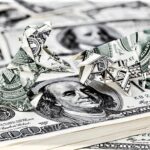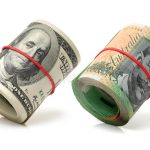Tensions between Israel and Palestine are lowering the value of the pound sterling, which is heading toward a seven-month low.
The pound sterling (GBP) is still under a lot of selling pressure. Because of the negative market mood brought about by the Middle East’s growing tensions. And the UK’s bleak economic outlook. For the third trading session in a row. The GBPUSD pair is losing ground as the UK region’s economic activity and labor market conditions worsen. As a result of a drop in new company orders.
The UK’s labor demand is beginning to feel the effects of weak corporate activity.
A series of feeble Economic data from the UK economy has dampened anticipations. That the Bank of England (BoE) will raise interest rates further. It is anticipated. That the central bank would maintain interest rates at 5.25% in order to prevent additional economic setbacks. Interest rates are expected to remain steady by the BoE because any increase in borrowing costs has the potential to send the economy into recession.
Daily Market Movers: US Q3 GDP data comes first, and the pound sterling falls.
As market mood soured, the pound sterling continues its losing run for the third straight day.
As Israeli Prime Minister Benjamin Netanyahu reaffirmed on Wednesday that his forces are getting ready. For a ground invasion to destroy Hamas in Gaza. The overall market sentiment became risk-off. of “preserving the country.”
Benjamin Netanyahu went on to say that the army will annihilate the Palestinian military group but he would not say when the incursion will start.
The allure of risk-perceived assets has diminished due to increased dangers of the Israel-Palestine conflict being worse.
The poor outlook for the UK economy has led to a sharp sell-off in the pound sterling, on top of the depressing atmosphere in the market.
According to an October S&P Global poll, businesses in the UK are still operating at reduced capacity as a result of weak demand in both the domestic and international markets, indicating that business activity is still in the contraction phase.
Because of their dismal prognosis for demand. UK businesses mostly rely on their inventory backlog to meet their customers’ current demands. The United Kingdom According to Chris Williamson, Chief Business Economist at S&P Global Market Intelligence. The economy continued to teeter on the verge of recession in October due to a third month of declining output, which was largely attributed to rising interest rates, rising cost of living, and declining exports.
Employers in the UK are cutting jobs for the third consecutive month as a result of the fallout from the dismal business environment. According to the UK Office for National Statistics (ONS), 82K workers lost their jobs in August. In September, the Claimant Count Change also increased significantly by 20.4K.
To prevent a recession, the BoE is expected to decide on interest rates steadily.
Pound investor attention will be focused on the Bank of England’s (BoE) interest rate decision going ahead, which is scheduled for announcement on November 2.
Because to low levels of consumer spending and business activity, , given worsening employment market circumstances, BoE policymakers are anticipated to hold interest rates steady at 5.25% for a second time.
With three months remaining before the UK prime minister delivers on his pledge to cut inflation to 5.4% by year’s end, investors are still concerned about the inflation picture.
The US dollar, meanwhile, rises to a two-week high of 106.86 as investors’ need for safe-haven assets increases as a result of rising geopolitical concerns.
The US economy is resilient in spite of higher interest rates set by the Federal Reserve (Fed). In contrast to other economies that are finding it difficult to maintain a stable foundation in the face of high interest rates. As a result, demand for the US dollar is strengthening.
According to the S&P Global survey, private sector business activity in the US experienced growth in October. Expectations that the Fed will stop raising interest rates contributed to an improvement in business confidence.
Investors are waiting for the Q3 GDP report. Which is scheduled to be released at 12:30 GMT. According to forecasts by economists. The US economy grew by 4.2% annually. As opposed to the 2.1% growth that was seen during the same period previous year.









